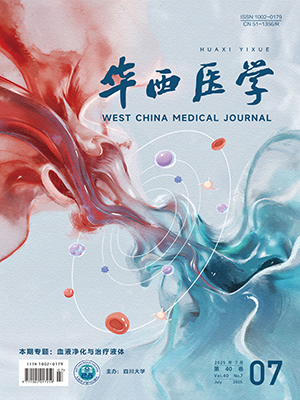Objective To explore low-seniority nurses' attitudes regarding adverse events reporting.
Method A total of 200 low-seniority nurses were investigated with the Chinese version of Reporting of Clinical Adverse Events Scale from October to December 2013. Epidata software was used to collect and manage data and SPSS 17.0 software was applied to analyze the collected data.
Results The nurses who once witnessed or experienced adverse events accounted for 76%, of whom 74.3% reported adverse events. The mean score of reporting of clinical adverse events among low-seniority nurses was 48.5±7.2. Age was positively associated with the global scores of reporting of clinical adverse events, when compared with other variables (r=0.20, P=0.01).
Conclusions Overall, low-seniority nurses' attitudes toward reporting adverse events are negative. Age is positively associated with attitudes toward reporting adverse events. Therefore, a non-punitive culture should be established and an efficient reporting system is good to enhance the quality of care.
Citation:
WANGHai-yan. Attitudes toward Reporting Adverse Events among Low-seniority Nurses and the Related Factors. West China Medical Journal, 2015, 30(9): 1730-1732. doi: 10.7507/1002-0179.20150495
Copy
Copyright © the editorial department of West China Medical Journal of West China Medical Publisher. All rights reserved
| 1. |
任仲杰. 美国的医疗差错和不良事件报告系统[J]. 中华医院管理杂志, 2006, 22(6):425-427.
|
| 2. |
刘虹. 患者安全:重大卫生问题[N]. 健康报, 2008-04-10(3).
|
| 3. |
龙艳芳, 李映兰, 郭燕红. 我国护理不良事件报告现况调查及分 析[J]. 中国护理管理, 2013, 11(5):16-20.
|
| 4. |
来鸣, 浮淑慧, 杨明丽, 等. 临床护理缺陷分析与危机管理[J]. 中华护理杂志, 2005, 40(12):922-923.
|
| 5. |
Wilson HL, Bekker FF. Reporting of Clinical Adverse Events Scale:a measure of doctor and nurse attitudes to adverse event reporting[J]. Qual Saf Health Care, 2008, 17(5):364-367.
|
| 6. |
覃惠英. 运用科学管理手段促进护理质量持续改进[J]. 中国护理管理, 2010, 10(6):25-26.
|
| 7. |
WHO. 10 facts on patient safety. Updated June 2014[EB/OL].[2015-04-03]. http://www.who.int/features/factfiles/patient_safety/en/.
|
| 8. |
Jordan S. Adverse events:expecting too much of nurses and too little of nursing research[J]. J Nurs Manage, 2011, 19(3):287-292.
|
| 9. |
Shekelle PG, Peter J. Advancing the science of patient safety[J]. Ann Intern Med, 2011, 154(10):693-696.
|
| 10. |
张继红, 徐字红. 年轻护士发生护理不良事件的归因分析及管理对策[J]. 护理研究, 2013, 47(2):461-463.
|
| 11. |
Evans SM, Berry JG, Smith BJ, et al. Attitudes and barriers to incident reporting:a collaborative hospital study[J]. Qual Saf Health Care, 2006, 15(1):39-43.
|
| 12. |
王玲, 张艳. 护士在无责呈报制度下主动呈报不良事件的现状分析及对策[J]. 护理管理杂志, 2009, 9(7):46-48.
|
| 13. |
孙晓, 施雁. 护士不良事件报告态度、行为意向及行为调查分 析[J]. 护理学报, 2013, 20(7):8-12.
|
| 14. |
王小燕. 不同年资护士对不良事件上报态度的调查研究[J]. 华西医学, 2015, 30(6):1160-1162.
|
- 1. 任仲杰. 美国的医疗差错和不良事件报告系统[J]. 中华医院管理杂志, 2006, 22(6):425-427.
- 2. 刘虹. 患者安全:重大卫生问题[N]. 健康报, 2008-04-10(3).
- 3. 龙艳芳, 李映兰, 郭燕红. 我国护理不良事件报告现况调查及分 析[J]. 中国护理管理, 2013, 11(5):16-20.
- 4. 来鸣, 浮淑慧, 杨明丽, 等. 临床护理缺陷分析与危机管理[J]. 中华护理杂志, 2005, 40(12):922-923.
- 5. Wilson HL, Bekker FF. Reporting of Clinical Adverse Events Scale:a measure of doctor and nurse attitudes to adverse event reporting[J]. Qual Saf Health Care, 2008, 17(5):364-367.
- 6. 覃惠英. 运用科学管理手段促进护理质量持续改进[J]. 中国护理管理, 2010, 10(6):25-26.
- 7. WHO. 10 facts on patient safety. Updated June 2014[EB/OL].[2015-04-03]. http://www.who.int/features/factfiles/patient_safety/en/.
- 8. Jordan S. Adverse events:expecting too much of nurses and too little of nursing research[J]. J Nurs Manage, 2011, 19(3):287-292.
- 9. Shekelle PG, Peter J. Advancing the science of patient safety[J]. Ann Intern Med, 2011, 154(10):693-696.
- 10. 张继红, 徐字红. 年轻护士发生护理不良事件的归因分析及管理对策[J]. 护理研究, 2013, 47(2):461-463.
- 11. Evans SM, Berry JG, Smith BJ, et al. Attitudes and barriers to incident reporting:a collaborative hospital study[J]. Qual Saf Health Care, 2006, 15(1):39-43.
- 12. 王玲, 张艳. 护士在无责呈报制度下主动呈报不良事件的现状分析及对策[J]. 护理管理杂志, 2009, 9(7):46-48.
- 13. 孙晓, 施雁. 护士不良事件报告态度、行为意向及行为调查分 析[J]. 护理学报, 2013, 20(7):8-12.
- 14. 王小燕. 不同年资护士对不良事件上报态度的调查研究[J]. 华西医学, 2015, 30(6):1160-1162.




